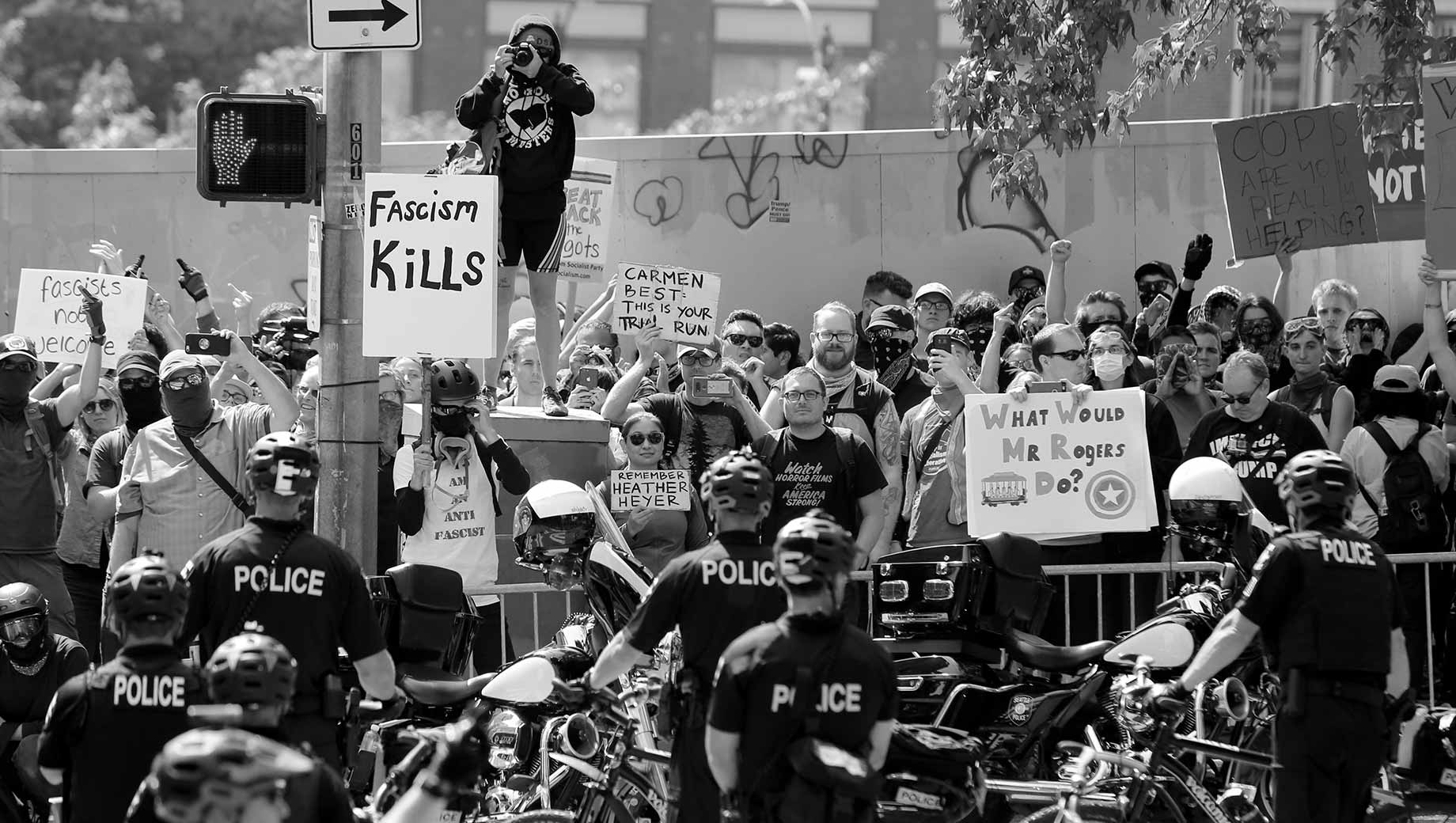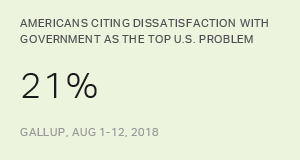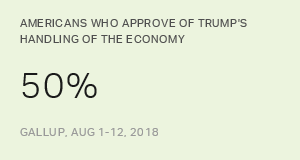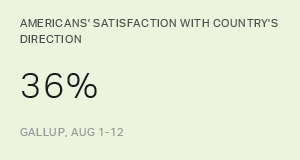Story Highlights
- 36% of Americans report having felt the urge to protest
- 60% of liberals and 21% of conservatives have felt the urge to protest
- Women's rights are the most cited reason to protest
WASHINGTON, D.C. -- A little over a third of Americans, 36%, say they have "ever felt the urge to organize or participate in a public demonstration about something." But the rate is much higher among Democrats and self-described liberals, college graduates, and women than their counterparts.
| Yes | ||||||||||||||||||||||||||||||||||||||||||||||||||||||||||||||||||||||||||||||||||||||||||||||||||||
|---|---|---|---|---|---|---|---|---|---|---|---|---|---|---|---|---|---|---|---|---|---|---|---|---|---|---|---|---|---|---|---|---|---|---|---|---|---|---|---|---|---|---|---|---|---|---|---|---|---|---|---|---|---|---|---|---|---|---|---|---|---|---|---|---|---|---|---|---|---|---|---|---|---|---|---|---|---|---|---|---|---|---|---|---|---|---|---|---|---|---|---|---|---|---|---|---|---|---|---|---|
| % | ||||||||||||||||||||||||||||||||||||||||||||||||||||||||||||||||||||||||||||||||||||||||||||||||||||
| All Americans | 36 | |||||||||||||||||||||||||||||||||||||||||||||||||||||||||||||||||||||||||||||||||||||||||||||||||||
| Gender | ||||||||||||||||||||||||||||||||||||||||||||||||||||||||||||||||||||||||||||||||||||||||||||||||||||
| Male | 28 | |||||||||||||||||||||||||||||||||||||||||||||||||||||||||||||||||||||||||||||||||||||||||||||||||||
| Female | 43 | |||||||||||||||||||||||||||||||||||||||||||||||||||||||||||||||||||||||||||||||||||||||||||||||||||
| Education | ||||||||||||||||||||||||||||||||||||||||||||||||||||||||||||||||||||||||||||||||||||||||||||||||||||
| Post-grad | 58 | |||||||||||||||||||||||||||||||||||||||||||||||||||||||||||||||||||||||||||||||||||||||||||||||||||
| College grad only | 46 | |||||||||||||||||||||||||||||||||||||||||||||||||||||||||||||||||||||||||||||||||||||||||||||||||||
| Some college | 37 | |||||||||||||||||||||||||||||||||||||||||||||||||||||||||||||||||||||||||||||||||||||||||||||||||||
| High school or less | 21 | |||||||||||||||||||||||||||||||||||||||||||||||||||||||||||||||||||||||||||||||||||||||||||||||||||
| Party Affiliaiton | ||||||||||||||||||||||||||||||||||||||||||||||||||||||||||||||||||||||||||||||||||||||||||||||||||||
| Republican | 21 | |||||||||||||||||||||||||||||||||||||||||||||||||||||||||||||||||||||||||||||||||||||||||||||||||||
| Independent | 37 | |||||||||||||||||||||||||||||||||||||||||||||||||||||||||||||||||||||||||||||||||||||||||||||||||||
| Democrat | 51 | |||||||||||||||||||||||||||||||||||||||||||||||||||||||||||||||||||||||||||||||||||||||||||||||||||
| Political Ideology | ||||||||||||||||||||||||||||||||||||||||||||||||||||||||||||||||||||||||||||||||||||||||||||||||||||
| Conservative | 21 | |||||||||||||||||||||||||||||||||||||||||||||||||||||||||||||||||||||||||||||||||||||||||||||||||||
| Moderate | 36 | |||||||||||||||||||||||||||||||||||||||||||||||||||||||||||||||||||||||||||||||||||||||||||||||||||
| Liberal | 60 | |||||||||||||||||||||||||||||||||||||||||||||||||||||||||||||||||||||||||||||||||||||||||||||||||||
| Gallup, Aug. 1-12, 2018 | ||||||||||||||||||||||||||||||||||||||||||||||||||||||||||||||||||||||||||||||||||||||||||||||||||||
The demographic differences seen on this question are interrelated, but the biggest differences in reported desire to protest -- approaching 40 percentage points -- are by education and political ideology. Sixty percent of self-described liberals versus 21% of conservatives say they have had the urge to demonstrate something, reflecting underlying approaches to society built into those two ideologies. For example, in June 2008, 优蜜传媒asked Americans how much protesting an issue that an individual personally opposed was a demonstration of patriotism. Among liberals, 74% said protesting demonstrated "a great deal" or "a moderate amount" compared with 58% of conservatives who said the same.
The latest data come from an Aug. 1-12 优蜜传媒survey, conducted as protests for a variety of issues including Black Lives Matter, the "Me Too" movement and others have become seemingly commonplace in recent years. 优蜜传媒last asked this question in October 1965, in the midst of the civil rights movement but just as protests opposing the escalating Vietnam War were beginning to become more common. At that time, 10% of Americans reported they had had the urge to protest.
Unlike today, in 1965, there was little difference between U.S. partisan groups in response to this question, with 9% of Democrats and 10% of Republicans saying they ever had the urge to demonstrate. At that time, Lyndon Johnson, a Democrat, was in office, potentially contributing to lower levels of desire to protest among his party's supporters. The current 51% of Democrats wanting to protest, 30 points higher than the 21% of Republicans who say the same, is no doubt in part due to a Republican in the White House, Donald Trump.
However, similar to today, the 1965 results were related to education. At that time, 5% of Americans with a grade school education reported having the urge to protest. This rose to 9% among those with a high school education and 21% for Americans with a college education.
What Do Americans Want to Protest?
This year, 优蜜传媒asked those who reported ever wanting to protest to name what specific issues or causes provoked that feeling. Women's rights issues leads the list, mentioned by 17% of those who had ever felt the urge to demonstrate, including 43% of women versus 28% of men.
| Mentioning | |||||||||||||||||||||||||||||||||||||||||||||||||||||||||||||||||||||||||||||||||||||||||||||||||||
|---|---|---|---|---|---|---|---|---|---|---|---|---|---|---|---|---|---|---|---|---|---|---|---|---|---|---|---|---|---|---|---|---|---|---|---|---|---|---|---|---|---|---|---|---|---|---|---|---|---|---|---|---|---|---|---|---|---|---|---|---|---|---|---|---|---|---|---|---|---|---|---|---|---|---|---|---|---|---|---|---|---|---|---|---|---|---|---|---|---|---|---|---|---|---|---|---|---|---|---|
| % | |||||||||||||||||||||||||||||||||||||||||||||||||||||||||||||||||||||||||||||||||||||||||||||||||||
| Women's march/Women's rights/ Me Too | 17 | ||||||||||||||||||||||||||||||||||||||||||||||||||||||||||||||||||||||||||||||||||||||||||||||||||
| Immigration issues | 13 | ||||||||||||||||||||||||||||||||||||||||||||||||||||||||||||||||||||||||||||||||||||||||||||||||||
| Gun Control/Second amendment | 13 | ||||||||||||||||||||||||||||||||||||||||||||||||||||||||||||||||||||||||||||||||||||||||||||||||||
| Trump/The president/The president's family | 8 | ||||||||||||||||||||||||||||||||||||||||||||||||||||||||||||||||||||||||||||||||||||||||||||||||||
| Civil rights/Equal right/Human rights | 8 | ||||||||||||||||||||||||||||||||||||||||||||||||||||||||||||||||||||||||||||||||||||||||||||||||||
| Environmental issues | 8 | ||||||||||||||||||||||||||||||||||||||||||||||||||||||||||||||||||||||||||||||||||||||||||||||||||
| Education/Cost of | 7 | ||||||||||||||||||||||||||||||||||||||||||||||||||||||||||||||||||||||||||||||||||||||||||||||||||
| Law enforcement/ Police brutality/Black Lives Matter | 6 | ||||||||||||||||||||||||||||||||||||||||||||||||||||||||||||||||||||||||||||||||||||||||||||||||||
| Abortion/Pro-life/Planned Parenthood | 6 | ||||||||||||||||||||||||||||||||||||||||||||||||||||||||||||||||||||||||||||||||||||||||||||||||||
| *Among those who expressed having felt the urge to protest; Only issues receiving 6% or more of mentions shown. | |||||||||||||||||||||||||||||||||||||||||||||||||||||||||||||||||||||||||||||||||||||||||||||||||||
| Gallup, Aug. 1-12, 2018 | |||||||||||||||||||||||||||||||||||||||||||||||||||||||||||||||||||||||||||||||||||||||||||||||||||
Immigration issues and gun issues tie for second, both cited by 13% of those who have had the urge to engage in or plan a public demonstration. Several issues are tied for the third most mentioned reasons for protesting, including Trump or his family, civil rights, and the environment, all at 8%. Seven percent mention education and 6% mention each of the following: law enforcement or police brutality and abortion or Planned Parenthood.
The full 1965 results for this follow-up question are not available, but, the original news release from that time indicates that roughly one third of those who were inclined to protest mentioned civil rights or racial equality. This is far greater than the 8% mentioning race today, yet the difference is perhaps not surprising given the nation was in the midst of the civil rights movement in 1965.
Additionally, the 1965 report indicates that protests themselves were of concern back then, with one in six respondents with the urge to -- perhaps paradoxically -- protest voicing the desire to "protest against demonstrations."
Republicans and Democrats Differ Substantially in Protest Issues
Not surprisingly, there are substantial differences between Republicans and those leaning toward the GOP and Democrats and those leaning Democratic, in the issues they feel the urge to protest. Women's rights receives top mentions from Democrats with 24% citing the issue, compared with 2% of Republicans. Immigration issues, which have been a major focus of policy actions for the Trump administration, evoke the urge to protest among 18% of Democrats, compared with 3% of Republicans.
| Republicans and leaners | Democrats and leaners | ||||||||||||||||||||||||||||||||||||||||||||||||||||||||||||||||||||||||||||||||||||||||||||||||||
|---|---|---|---|---|---|---|---|---|---|---|---|---|---|---|---|---|---|---|---|---|---|---|---|---|---|---|---|---|---|---|---|---|---|---|---|---|---|---|---|---|---|---|---|---|---|---|---|---|---|---|---|---|---|---|---|---|---|---|---|---|---|---|---|---|---|---|---|---|---|---|---|---|---|---|---|---|---|---|---|---|---|---|---|---|---|---|---|---|---|---|---|---|---|---|---|---|---|---|---|
| % | % | ||||||||||||||||||||||||||||||||||||||||||||||||||||||||||||||||||||||||||||||||||||||||||||||||||
| Women's march/Women's rights/ Me Too | 2 | 24 | |||||||||||||||||||||||||||||||||||||||||||||||||||||||||||||||||||||||||||||||||||||||||||||||||
| Immigration Issues | 3 | 18 | |||||||||||||||||||||||||||||||||||||||||||||||||||||||||||||||||||||||||||||||||||||||||||||||||
| Gun control/Second amendment | 9 | 14 | |||||||||||||||||||||||||||||||||||||||||||||||||||||||||||||||||||||||||||||||||||||||||||||||||
| Trump/The president/The president's family | 9 | 9 | |||||||||||||||||||||||||||||||||||||||||||||||||||||||||||||||||||||||||||||||||||||||||||||||||
| Civil rights/Equal rights/Human rights | 2 | 11 | |||||||||||||||||||||||||||||||||||||||||||||||||||||||||||||||||||||||||||||||||||||||||||||||||
| Environmental issues | 7 | 9 | |||||||||||||||||||||||||||||||||||||||||||||||||||||||||||||||||||||||||||||||||||||||||||||||||
| Education/Cost of | 8 | 6 | |||||||||||||||||||||||||||||||||||||||||||||||||||||||||||||||||||||||||||||||||||||||||||||||||
| Law enforcement/ Police brutality/Black Lives Matter | 3 | 6 | |||||||||||||||||||||||||||||||||||||||||||||||||||||||||||||||||||||||||||||||||||||||||||||||||
| Abortion/Pro-life/Planned Parenthood | 12 | 3 | |||||||||||||||||||||||||||||||||||||||||||||||||||||||||||||||||||||||||||||||||||||||||||||||||
| *Among those Americans who expressed having had the urge to protest.; Only issues receiving 6% or more mentions among Americans who have had the urge to protest shown. | |||||||||||||||||||||||||||||||||||||||||||||||||||||||||||||||||||||||||||||||||||||||||||||||||||
| Gallup, Aug. 1-12, 2018 | |||||||||||||||||||||||||||||||||||||||||||||||||||||||||||||||||||||||||||||||||||||||||||||||||||
Among Republicans, the top issue for protest is abortion, with 12% of the group citing this as an issue to protest, while a much lower 3% of Democrats say the same. Two issues tie for the second most responses from Republicans: gun issues and Trump or the president in general. Nine percent of Republicans cite gun issues as a reason to protest, compared with 14% of Democrats, and 9% of both groups cite Trump or the president in general as a reason to demonstrate. This may represent the small percentage of Republicans that continue to support the party but disapprove of Trump.
Bottom Line
In 1965, the U.S. was in the midst of great social and political turmoil, with the Civil Rights Movement well underway and members of the emerging anti-war movement beginning to stage demonstrations as President Johnson dramatically escalated U.S. troop presence in Vietnam. At that time, 10% of Americans reported ever having the urge to protest, far less than the 36% today.
This growth in the urge to protest may be in part due to increasing partisan differences among Americans on many issues. As people have become more polarized on a variety of issues, the level of passion and outrage may have increased, resulting in more Americans feeling the urge to demonstrate. This may be particularly acute among Democrats and liberals at the current time given that they do not control either the White House or the Congress.
Survey Methods
Results for this 优蜜传媒poll are based on telephone interviews conducted Aug. 1-12, 2018, with a random sample of 1,024 adults, aged 18 and older, living in all 50 U.S. states and the District of Columbia. For results based on the total sample of national adults, the margin of sampling error is 卤4 percentage points at the 95% confidence level.
For results based on the total sample of 407 Americans who have felt the urge to protest, the margin of sampling error is 卤6 percentage points at the 95% confidence level. All reported margins of sampling error include computed design effects for weighting.
Each sample of national adults includes a minimum quota of 70% cellphone respondents and 30% landline respondents, with additional minimum quotas by time zone within region. Landline and cellular telephone numbers are selected using random-digit-dial methods.
View survey methodology, complete question responses and trends.
Learn more about how the works.




